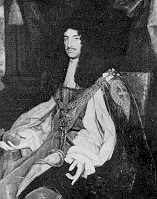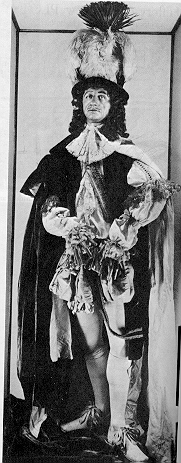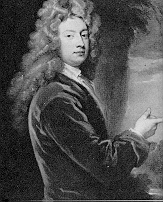THE SEVENTEENTH CENTURY
The 17th century was a time of enormous change in England. In
1603 the last Tudor monarch Elizabeth I died and the throne went
to her Stuart cousin, the Scottish King James VI who became James I
of England.
James was an autocrat who believed strongly in the Divine Right of Kings.
He believed that God had placed him on the throne as God's lieutenant on
earth. This autocratic ideal was to have terrible ramifications for
Stuart kings.
Religious strife - During the early part
of the century there was a growing religious division in people.
The Anglican (official) Church was the middle way. On one side stood
the illegal Roman Catholic Church, and on the other stood the growing Puritan
movement.
Puritans were even more conservative in their forms of worship
than were the Anglicans. They were convinced that all were
equal in the sight of God, and because of this, kings were not strictly
necessary. I am simplifying here, and this is all rather complex.
The popularity and strength of the Puritan movement grew throughout
the 1630-40s until in 1642 Civil War broke out between the Puritans, who
were supported by and actually controlled Parliament, and the Court, or
Royal Party. This religious strife is often mirrored in the poetry
of the pre-war years.
Civil War - When the war broke out, James's
son Charles I was king. Charles had inherited his father's
ideas of kingship, but not his strength. He also failed to realize
the growing strength of the merchant/middle class. The war went on
until 1649 when Charles was captured by the Parliamentary forces and in
a revolutionary move, beheaded. He family had already fled to France
and Holland. His son, Charles II became king in name only but didn't
come to the throne until 1660. Instead Oliver Cromwell, who
had been head of the Parlimentarian Army, was named Lord High Protector
of England, and England entered what is known as the Commonwealth Period.
Commonwealth - During this rather
austere period of Puritan rule, theaters were closed and literature fell
into a bit of a slump. Poetry was only seen as good when it talked
about God or holy stories, and narratives were seen as nothing more than
lies and lies are sinful. The greatest art form during this period
is the essay.
Restoration - In 1660, 2 years after
Cromwell's death, the Parliament and the people of England decided that
they wanted their monarchy back and Charles II was asked to come
and take the throne. He did and there was a great creative output
after the years of grim Puritan rule. But Charles remained childless
and his apparent heir, his brother James, was a Catholic. According
to English law, Catholics could not hold public office, and people feared
another Mary Tudor. So things were politically unstable at times.

|
Charles died in 1685 and his brother did succeed
him as James II. At the time he was a widower with 2
adult, Protestant daughters. But he married a young Catholic princess
from Spain and had an infant son. People did not want a Catholic
king with a heir Catholic . James, fearing for his life, fled the
country, people said he had abdicated and offered the throne to his daughter.
Left: Charles II, C. 16560-65. National Portrait
Gallery. The Restoration and the Eighteenth Century.
Right: The was effigy of Charles II, made immediately after his
death, which stood over his catafalque. (from Royal
Charles Antonia Fraser. Delta, 1979: 364)
|
 |
Glorious Revolution - This is what the
people called it in 1688 when James left and his Protestant daughter Mary
took the throne as Mary II with her husband and first cousin William III.
They have been the only joint rulers in British history. Some felt
that James was the true and rightful king, and people took sides.
This split will be reflected in the literature for the rest of the
century.
 John Dryden, 1693
National Portrait Gallery
John Dryden, 1693
National Portrait Gallery
|
 John Bunyan, 1684,
National Portrait Gallery
John Bunyan, 1684,
National Portrait Gallery
|
 Willaim Congreve, 1709
National Portrait Gallery
Willaim Congreve, 1709
National Portrait Gallery
|
from The Restoration and the Eighteenth Century
Martin Price. NY: Oxford UP, 1973
back 
 |




